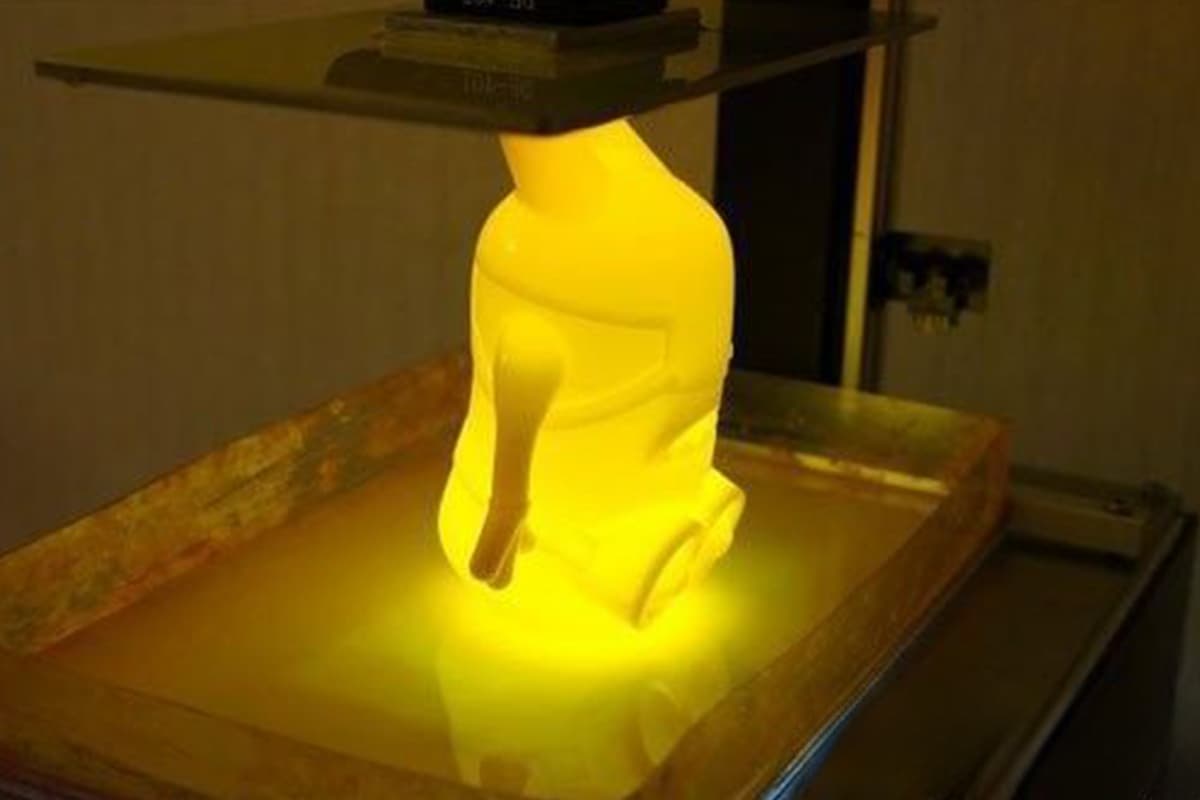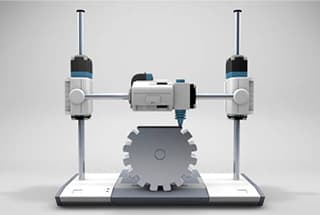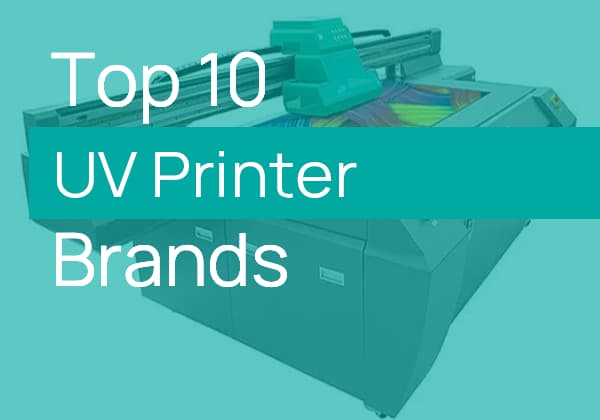
Ever wondered how your favorite products get their labels and codes? This article unveils the top inkjet printer manufacturers shaping the world of product identification. From cutting-edge technology to global reach, discover how these companies ensure accuracy and efficiency in everyday items. Get ready to explore the fascinating world behind the labels!
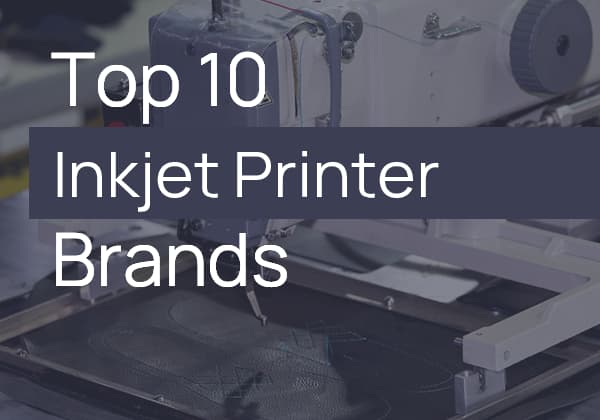
Inkjet printing technology has transformed the way images and text are produced, providing high-quality results across various applications. This non-impact printing method works by ejecting tiny droplets of ink onto a substrate, which can include paper, plastic, metal, and fabric. The precision and versatility of inkjet printing make it a preferred choice for both consumer and industrial applications.
Thermal inkjet printing, widely used by manufacturers such as HP and Canon, involves heating ink in small chambers to create a vapor bubble. The bubble expands and collapses, ejecting ink droplets through the nozzles. This method is celebrated for its high resolution and speed. Thermal inkjet printers, capable of producing prints with resolutions up to 1200 x 1200 dpi, are ideal for detailed prints in home and office settings, as well as in large-format printing applications. For example, thermal inkjet technology is extensively used in printing photographs, documents, and posters, where sharpness and clarity are crucial.
Advantages of Thermal Inkjet Printing
Piezoelectric inkjet printing employs piezoelectric materials that change shape when an electric charge is applied, allowing for precise control over ink ejection. This method supports a broader range of inks, including those with varying viscosities. Manufacturers like Epson and Konica Minolta utilize this technology in industrial applications where durability and speed are paramount. Piezoelectric inkjet printers are often used in high-volume production environments, such as textile printing and packaging, where efficiency and the ability to support single-pass printing are essential.
Advantages of Piezoelectric Inkjet Printing
Inkjet printing offers several benefits that contribute to its widespread use:
The inkjet printing landscape is continuously evolving, driven by technological advancements. Innovations in print head technology, such as improved drop size modulation and enhanced color accuracy, are paving the way for even higher-quality outputs. Additionally, the integration of digital workflows is streamlining production processes, enabling faster turnaround times and greater customization. The development of eco-friendly inks and sustainable printing practices is becoming increasingly important as industries strive to reduce their environmental impact. These trends are likely to shape the future of inkjet printing, expanding its applications and enhancing its appeal across various sectors.
In conclusion, inkjet printing technology stands out for its exceptional quality, versatility, and efficiency. As manufacturers continue to innovate and refine their offerings, the potential applications for inkjet printing will only expand, making it a critical component in both consumer and industrial markets.
The inkjet printer market is dominated by several key manufacturers known for their innovative technologies, diverse product offerings, and significant market presence. These companies cater to both consumer and industrial segments, providing a range of solutions that meet various printing needs.
HP is one of the most influential players in the inkjet printer industry, offering a comprehensive range of printers for both personal and business use. Founded in 1939, HP has consistently led the market with its innovative technologies and robust product lineup. Notable models include the HP OfficeJet Pro and HP ENVY series, which are highly popular among consumers for their reliability and advanced features. The HP+ Smart Printing System is a significant innovation, enhancing printer functionality with smart features. HP’s dominance is reflected in its significant share of global printer shipments, driven by strong sales in both home and office environments.
Canon, established in 1933, is another major force in the inkjet printer market. The company provides a wide variety of printing solutions, including office, personal, large format, and production printers. Canon’s PIXMA series is particularly popular among consumers for its high-quality photo printing capabilities. The MAXIFY series caters to small businesses with its robust performance and efficiency. Canon’s strong market position is evidenced by its high global printer shipment volumes, securing its place as a leading manufacturer.
Epson, founded in 1942, is renowned for its innovative printing technologies and extensive product range. The company introduced the world’s first miniprinter in 1968 and has since developed a variety of inkjet printers. Epson’s EcoTank series, known for its cost-efficiency and high-volume printing, is a standout product line. The Expression series caters to home users with its versatility and ease of use. Epson’s significant global presence is highlighted by its shipment of over 3.6 million printers worldwide in the second quarter of 2023. The company’s commitment to innovation and quality makes it a top choice for both consumers and businesses.
Brother International Corporation, established in 1908, focuses on office solutions such as printers, scanners, and label makers. Serving workgroups of about 1-20 users, Brother has a strong distribution network in over 100 countries. The Brother INKvestment Tank series is highly regarded for its long-lasting ink cartridges and low running costs. The company ranked fourth in worldwide printer shipments in the second quarter of 2023, underscoring its notable presence in the inkjet printer market. Brother’s printers are known for their reliability and user-friendly features, making them popular in office settings.
Although Xerox is primarily known for its copiers, it also produces a range of inkjet printers, particularly for production, office, and remote work environments. Xerox’s ConnectKey technology, which offers cloud integration and mobile printing solutions, enhances the functionality of their devices. Models like the Xerox VersaLink and AltaLink series are designed for high-volume, professional printing needs. While Xerox may not dominate the inkjet segment as it does with laser printers, it still holds a substantial position in the overall printer market, offering robust solutions for various printing needs.
Known for their industrial printing solutions, Hitachi contributes significantly to the inkjet printing market, particularly in sectors requiring high durability and precision. Hitachi’s industrial inkjet printers are widely used in manufacturing for coding and marking applications. These printers are designed to handle harsh industrial environments while maintaining high print quality.
Specializing in industrial inkjet printing solutions, Videojet is often used in manufacturing and packaging, providing reliable and high-speed printing capabilities. Videojet’s continuous inkjet printers are known for their ability to print on a variety of surfaces and materials, making them ideal for diverse industrial applications.
In the second quarter of 2023, HP led the global printer shipments, followed closely by Canon and Epson. Brother secured the fourth position, demonstrating strong performance in the consumer market. Epson’s innovative EcoTank series has contributed significantly to its market share, highlighting the growing demand for cost-effective and high-volume printing solutions. HP’s OfficeJet Pro series continues to dominate the small office and home office segments, reflecting the company’s strength in meeting diverse consumer needs.
These manufacturers are recognized for their commitment to innovation, quality, and market presence, making them the leading figures in the inkjet printer industry. Their products cater to a wide range of applications, from personal and office use to industrial and specialized printing needs, ensuring that there is a solution for every printing requirement.
Here is a detailed and comprehensive list of the top 10 inkjet printer manufacturers and brands, based on their market presence, innovation, and customer satisfaction.
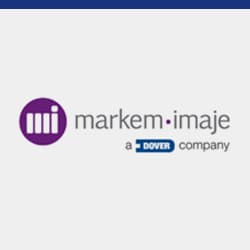
Country: France/USA
Founded: 1991
Markem-Imaje is a globally recognized leader in the field of product identification and tracking solutions. Their extensive portfolio includes a wide array of technologies such as inkjet, thermal transfer, laser printing, and labeling systems, as well as advanced RFID-based systems. These solutions are designed to meet the diverse needs of industries ranging from food and beverage to pharmaceuticals and electronics.
Markem-Imaje places a strong emphasis on several critical aspects to ensure they deliver top-notch solutions:
Markem-Imaje’s global presence is bolstered by 30 subsidiaries that deliver high-quality product marking and coding solutions to over 40,000 customers worldwide. This extensive network ensures that customers receive prompt and reliable service, no matter where they are located.
To stay at the forefront of innovation, Markem-Imaje operates six R&D centers. These centers are dedicated to developing cutting-edge technologies and solutions that address the evolving needs of their customers. The company’s commitment to research and development ensures that they remain a leader in the industry.
In addition to their R&D efforts, Markem-Imaje supports their customers with numerous equipment maintenance centers. These centers provide essential services to keep marking and coding systems running smoothly. Furthermore, the company’s strategically located manufacturing plants enable them to produce and deliver high-quality products efficiently.

Country: USA
Videojet (Shanghai) Identification Technology Co., Ltd. originated as a department of A.B. Dick Company and became a subsidiary of the Danaher Group of the United States in the 1960s. Today, Videojet stands as one of the world’s leading manufacturers of identification systems, renowned for its innovative products, exceptional services, and customized logo solutions. The company is recognized as a representative of stable overall solutions in the global logo industry.
For over a decade, Videojet has been at the forefront of innovation, developing, manufacturing, and selling high-quality inkjet printing and marking equipment, along with consumables. The company has gained worldwide recognition for its diverse technologies that offer appropriate inkjet and logo solutions. Videojet’s product portfolio includes:
These products are capable of printing variable data such as use dates, production dates, batch numbers, operator information, and one-dimensional and two-dimensional barcodes on nearly all printable product packages, freight containers, or pallets.
With over 325,000 sets of equipment installed worldwide, Videojet has established a robust global presence. The company operates 30 direct sales operation departments and employs more than 3,000 people. Its extensive global sales and service center network ensures high-quality services across all regions.
Videojet has direct sales operation departments in numerous countries, including:
These departments provide comprehensive sales, service, training, management, and application support to global customers. In the United States alone, Videojet employs 250 direct sales and service personnel.
In addition to its direct sales operations, Videojet’s distribution network includes over 150 distributors and global original equipment manufacturers (OEMs), covering 135 countries/regions. This extensive network ensures that Videojet’s high-quality products and services are accessible to customers worldwide.
Videojet’s commitment to delivering high-quality equipment, consumables, and services has solidified its reputation as a trusted manufacturer in the global logo industry. The company’s continuous innovation and dedication to customer satisfaction ensure that it remains a leader in the identification systems market.

Country: Britain
Founded: 1978
Domino Group, established in 1978 and headquartered in Cambridge, England, has built a worldwide reputation in the field of logos and printing. The company is renowned for its professional logo and printing technology, high-quality product equipment, and globally unified standard services.
Domino’s digital printing department is a key player in the business printing industry, offering advanced digital inkjet printing systems and label digital printing systems. These systems are extensively used for printing variable information, including:
With a workforce of over 2800 employees, Domino operates in more than 120 countries. The company has established production bases in several key locations, including:
Domino Logo Technology Co., Ltd. was founded in China in 1995, marking the Chinese market as one of Domino Group’s significant markets. Since 1998, Domino China has achieved several certifications in the logo industry, including:
In May 2002, Domino established its Asia Pacific headquarters in the Shanghai Jinqiao Export Processing Zone, which has become the largest overseas manufacturing and distribution center for Domino.
Domino has set up more than 30 branches, offices, and service stations across important regions and cities in China. These branches serve a diverse range of customers across various industries, including numerous well-known domestic and global enterprises.

Country: Japan
Founded: 1910
As a global leader in social innovation, Hitachi conducts business across a wide array of sectors, including electricity, energy, industry, circulation, water, urban construction, public services, and healthcare. The company is renowned for providing high-quality solutions through close collaboration with its customers.
Hitachi is currently accelerating its global social innovation initiatives to address various societal challenges. The company aims to become a key innovation partner in the IoT era, leveraging its historical strengths in control technology and its extensive experience in IT, which spans over half a century. By integrating big data analysis, AI, and other digital technologies, Hitachi strives for further development in the global market.
Founded in 1910, Hitachi has consistently adhered to its entrepreneurial spirit of “harmony, honesty, and pioneer spirit,” alongside its corporate philosophy of “contributing to society through excellent independent technology and product development.” Over more than a century, Hitachi has maintained a legacy of innovation and continuous growth.
In response to the rapid changes in the global economy, Hitachi has formulated a new vision: “Hitachi, with innovation to open the way to solutions, with excellent teams and rich global market experience, to inject new vitality into the world.” This vision is underpinned by the core values of the Hitachi Group, which focus on making significant contributions to social development with a renewed spirit.
In China, Hitachi has established extensive business activities with the goal of becoming “The Most Trusted Partner in China.” The company is deeply committed to environmental protection and is focused on the development and enhancement of energy conservation and emission reduction-based social infrastructure systems. Through these efforts, Hitachi aims to address China’s social challenges and contribute positively to the sustainable development of Chinese society.
Hitachi places a strong emphasis on sustainability, integrating environmental considerations into its business operations. The company is dedicated to developing technologies and solutions that promote energy efficiency and reduce emissions, thereby supporting global efforts to combat climate change and promote sustainable development.

Country: Britain
Founded: 1986
Linx, a renowned brand in the inkjet technology industry, was founded in the 1980s in Cambridge, England, the birthplace of inkjet technology. The company made a significant expansion into the Chinese market in 2013 by establishing a wholly-owned subsidiary, Linx Aoke (Shanghai) Trade Co., Ltd.
Linx has continually developed its own ink and solvent series to enhance the adaptability of its CIJ inkjet printers across various substrates and applications, including coding on wet bottles and UV-readable inks.

Country: Germany
Founded: 1817
Koenig & Bauer (KBA) has been a beacon of innovation in the printing industry since its inception in 1817. Over the years, the company has consistently pushed the boundaries of technology, setting new benchmarks and creating world records in printing and related fields.
In 2017, marking its 200th anniversary, KBA rebranded itself as Koenig & Bauer. This significant milestone heralded the beginning of its third century of development, characterized by a clear growth strategy and a fresh market outlook.
As one of the world’s foremost printing press manufacturers, KBA offers customized, innovative solutions tailored to a wide range of application needs. The company’s diverse product portfolio includes proprietary technologies across various printing domains, enabling it to transform users’ ideas into reality.
KBA’s influence is evident across multiple sectors:
KBA’s success is rooted in its unwavering commitment to innovation and continuous research. The company provides robust after-sales service guarantees, helping customers enhance their production performance. KBA’s online quality control systems ensure meticulous observation of each printed sheet, delivering superior printing quality and production efficiency.
With over 7,500 printing presses operating in more than 5,000 printing enterprises worldwide, KBA’s market dominance is a testament to its innovative ethos. The company’s sophisticated employees and reliable business partners have played a crucial role in merging customer needs with advanced technology, fostering continuous innovation.
KBA has deeply rooted itself in the Chinese market, leveraging its centuries-old spirit of innovation and comprehensive product services. The company has established a robust network encompassing design, production, sales, technical support, and after-sales service globally. In China, KBA has set up after-sales service systems and spare parts warehouses in Shanghai, Dongguan, and Hong Kong, staffed by rigorously trained engineering and technical personnel.
KBA Service 4.0 epitomizes the company’s commitment to high-end services, offering a range of solutions including:
These services have garnered high praise and affirmation from users.
KBA remains dedicated to providing top-notch technical support and after-sales service, working collaboratively with Chinese users to shape the future of printing. The company’s enduring innovative spirit and impeccable service standards continue to drive its success and growth in the global market.

Country: Germany
Founded: 1977
Established in 1977, EBS German Inkjet Group is a renowned multinational company specializing in industrial inkjet equipment. The company integrates research, development, and production to deliver cutting-edge solutions in the field of inkjet marking.
Headquartered in Cologne, Germany, EBS has established a robust global presence with subsidiaries in Poland, the United States, China, and several other countries. Its extensive product series and reliable professional technology enable EBS to serve customers in over 100 countries and regions worldwide.
EBS Logo Technology (Shenzhen) Co., Ltd. is a wholly-owned subsidiary of the German EBS Inkjet Group in China. As a high-tech enterprise, it manages all of EBS’s business operations within China. With distributors in every city across the country, EBS China provides competitive products and comprehensive after-sales service to domestic customers.
EBS boasts a complete product series in the field of inkjet code systems, including:
These products are designed to meet nearly all inkjet requirements for logos and markings.
EBS products are utilized across a wide array of industries globally, including:
In 2005, EBS made a significant investment in developing the innovative handheld inkjet printer, EBS-HANDJET250, which offers new solutions for marking heavy objects. This product exemplifies EBS’s commitment to innovation and customer-centric solutions.
EBS leverages advanced technology and superior quality to customize innovative and effective identification solutions for its customers. These solutions help reduce operating costs and solvent waste, improve production, operation, and logistics efficiency, and facilitate the integration of customer enterprises with Industry 4.0.
The company adheres to people-oriented values and is conscious of its environmental impact. All EBS products comply with ISO9001 certification, ensuring they meet customers’ quality needs and identification goals effectively.

Country: Japan
Founded: 1968
Founded: 1968
Headquarters: Wakayama, Japan
Specialization: Development, production, and sales of inkjet printers, wheel printers, and their consumables.
KGK Jizhou Technology Research Industry was established with the vision of bringing innovative printing technology to the global market from Kyushu, Japan. The company is dedicated to rigorous research to invigorate life and create a dynamic industry. Their sales personnel are technically proficient, coming from a group of skilled technicians, and they employ a direct marketing system to meticulously serve their customers.
Since its inception, KGK has developed and manufactured over 100 types of wheel code printing machines tailored for various production lines. The company has achieved significant milestones in self-developing printing heads, various consumables, and character detection machines. KGK has established a professional group that integrates development, manufacturing, and sales, making it a prominent enterprise in the field of Japanese logo machinery.
KGK serves a diverse customer base across various industries, demonstrating adaptability to market changes. As a development-oriented enterprise, KGK aims to better meet customer requirements, provide stable products, and showcase their technical prowess globally. They are actively promoting research in microprocessing technology and droplet technology.
KGK Jizhou Code Printing Technology (Shanghai) Co., Ltd.:
Established in November 2002, this wholly-owned subsidiary is located in the Shanghai Songjiang Export Processing Zone. The company has set up independent offices and liaison offices in 22 major cities across China and has agents in Malaysia, Singapore, Indonesia, Bangladesh, Russia, Vietnam, Nigeria, Thailand, Pakistan, and other countries and regions.
KGK offers more than 60 types of inkjet printers from their Japanese headquarters. These printers are capable of automatically printing product names, manufacturing dates, company logos, etc., on a variety of materials including:
KGK is experiencing rapid growth in the Chinese market and globally. Their commitment to innovation and customer satisfaction positions them as a leader in the printing technology industry.

Country: China
Founded: 2006
Guangzhou Yida Packaging Equipment Co., Ltd., established in 2006, is a wholly-owned subsidiary of Guangzhou Famaga Intelligent Equipment Co., Ltd. The company operates under multiple brands, including EC-JET and FOMONE. Guangzhou Yida is dedicated to delivering top-notch inkjet marking equipment, product testing equipment, professional industry solutions, and exceptional customer service to clients worldwide. The company strives to enhance customer value and support sustainable development.
Guangzhou Yida offers a comprehensive range of products, including:
As a pioneer in the domestic industry, Guangzhou Yida was the principal drafter and leader in formulating the national standard for Continuous Inkjet Printers (GB/T29017-2012). This achievement underscores the company’s commitment to quality and industry leadership.
Guangzhou Yida boasts a professional R&D team with industry-leading independent core technology and sustainable R&D capabilities. The company’s continuous innovation ensures a full range of advanced inkjet marking products and testing equipment.
Guangzhou Yida provides tailored products and professional industrial solutions across various sectors, including:
Guangzhou Yida is dedicated to offering high-quality customer service, aiming to create greater value for customers’ sustainable development. The company’s comprehensive support ensures that clients receive the best solutions tailored to their specific needs.

Country: USA
Founded: 1850
In 1850, John Dixon Matthews, an enterprising craftsman from Sheffield, England, arrived in Pittsburgh, Pennsylvania, and established a lettering shop. Matthews’ early products included military stamping fonts, soldering irons, and wooden crate seals. These items were essential for various industrial and commercial applications, reflecting the needs of the era.
As the 20th century dawned, the shipping industry underwent significant changes with the introduction of Wapung paper freight boxes, which began to replace traditional wooden crates. Demonstrating a keen sense of innovation and adaptability, Matthews responded to this shift by developing vulcanized rubber seals and printing plates specifically designed for use on cardboard. This move not only kept the company relevant but also positioned it as a pioneer in the evolving packaging industry.
Today, Matthews Marking Systems continues to uphold its legacy of innovation and leadership in the marking and coding industry. The company offers state-of-the-art solutions, including:
By consistently embracing technological advancements and responding to market demands, Matthews Marking Systems maintains its position as an industry leader, delivering cutting-edge marking solutions to a global clientele.
When comparing the major inkjet printer manufacturers, several factors come into play, including product range, print quality, running costs, ease of use, and additional features. Here is a detailed comparison of the leading brands: HP, Canon, Epson, Brother, and Xerox.
HP is renowned for its extensive range of inkjet and laser printers suitable for both home and business environments. Their printers are known for their reliability and high-quality printing capabilities.
Canon is highly regarded for its exceptional photo printing capabilities and diverse product offerings. Their printers are known for their ease of use and installation.
Epson focuses on high-quality inkjet printers and has ceased production of laser printers. They are known for their economical and environmentally friendly printing solutions.
Brother is known for producing affordable printers suitable for home and small office use. They are particularly strong in label printing.
Xerox primarily focuses on laser printers but offers some inkjet options, especially for business environments. They are known for their high print quality and advanced features.
Each manufacturer has its strengths and weaknesses, and the best choice depends on the specific needs of the user, whether it is high-quality photo printing, low running costs, ease of use, or advanced business features.
Selecting the right inkjet printer manufacturer is a critical decision that can impact the efficiency, quality, and cost-effectiveness of your printing operations. This guide will help you navigate through the essential factors to consider, ensuring you make an informed choice that aligns with your specific needs and applications.
Begin by identifying whether you need the printer for personal, office, or industrial use. Each manufacturer offers models tailored to different environments. For instance, HP and Canon provide versatile options suitable for home and office use, while manufacturers like Videojet and Hitachi specialize in industrial applications that require robust solutions.
Consider the level of print quality and speed required for your tasks. If high-quality photo printing is essential, Canon’s PIXMA series stands out for its superior color accuracy and detail. For high-volume printing, Epson’s EcoTank series is notable for its efficiency and reduced ink costs, with some models reportedly saving users up to 90% on ink expenses compared to traditional cartridge-based printers. Understanding the print resolution and speed specifications will help you determine which models can meet your expectations.
Evaluate both the initial cost of the printer and the long-term savings associated with ink usage. For example, while Epson’s EcoTank models may have higher upfront costs, they provide significant savings due to their refillable ink tanks, which can last several months before needing a refill. In contrast, traditional printers often require frequent cartridge replacements, leading to higher operational costs.
Consider the availability and quality of maintenance and support services. Canon and Xerox offer robust support options, including on-site and remote assistance, which can be crucial for minimizing downtime in business environments. Researching customer reviews can provide insight into the reliability of these services and help you choose a manufacturer that prioritizes customer satisfaction.
Look for printers that offer various connectivity options such as wireless, Ethernet, and mobile printing capabilities. HP and Canon excel in providing advanced connectivity features, including cloud-based printing services, which enhance user convenience and flexibility. The ability to print directly from mobile devices can streamline workflows in both home and office settings.
Identify any specialized features that may benefit your operations. For instance, HP’s Managed Print Services and HP+ Smart Printing System offer enhanced security and manageability for business environments, while Xerox’s ConnectKey technology provides advanced features like cloud integration and mobile printing solutions, ideal for modern offices that require flexibility and efficiency.
Research the manufacturer’s reputation and experience in the industry. Companies like HP, Canon, and Epson have established themselves as leaders through continuous innovation and reliability. In the industrial segment, manufacturers like Hitachi and Videojet are renowned for their high-performance coding and marking solutions, often used in production lines where precision is essential.
Examine customer reviews and feedback to understand the performance and reliability of the printers. Positive reviews and high ratings often indicate a dependable product and satisfactory customer service. Engaging with user forums or seeking testimonials can provide additional perspectives on the longevity and usability of specific models.
For label printing, Canon’s PIXMA series is highly regarded due to its compatibility with various label materials. Models such as the Canon PIXMA TS9120 and TS9520 are frequently praised for their excellent print quality on inkjet labels, making them suitable for businesses that require professional-looking labels.
For high-volume industrial printing, consider manufacturers like Domino and Videojet, known for their high-speed Continuous Inkjet (CIJ) printers. These printers are ideal for applications in sectors such as food and beverage, pharmaceuticals, and manufacturing, where efficient and accurate printing is paramount for compliance and branding.
By thoroughly evaluating these factors, you can make an informed decision on the right inkjet printer manufacturer that meets your unique requirements and enhances your operational efficiency.
Below are answers to some frequently asked questions:
The top inkjet printer manufacturers are globally recognized for their innovation, reliability, and the wide range of applications they serve. Leading the market are companies like HP (Hewlett-Packard), Canon, Epson, Brother, and Xerox.
HP, established in 1939, is renowned for its extensive range of printing solutions, including the HP+ Smart Printing System. Canon, founded in 1933, offers a variety of printing solutions such as the PIXMA series, which is popular for label printing and specialized applications. Epson, since 1942, is known for its efficient and high-performance printers, including the EcoTank series. Brother, with a history dating back to 1908, provides reliable and cost-effective office solutions. Xerox, established in 1906, is famous for its advanced features like ConnectKey technology in both single-function and multifunction devices.
In the specialized industrial inkjet printer sector, Xaar, MapleJet, and Paul Leibinger GmbH stand out. Xaar, based in the UK, specializes in piezoelectric drop-on-demand printheads for various applications. MapleJet, from Canada, supplies coding and marking printers used in industries such as food and pharmaceuticals. Paul Leibinger GmbH, a German company, is known for its innovative automatic nozzle sealing technology.
These manufacturers collectively contribute to the diverse and competitive landscape of the inkjet printing market, catering to both consumer and industrial needs with their advanced technologies and reliable products.
Inkjet printing technologies can be categorized into several main types, each with unique characteristics and applications. The primary types include Drop-On-Demand (DOD) and Continuous Inkjet (CIJ) printing.
Drop-On-Demand (DOD) inkjet printing is further divided into Piezoelectric Inkjet (PIJ) and Thermal Inkjet (TIJ). PIJ utilizes piezoelectric elements that change shape when electrically charged, pushing ink out of the nozzles. This technology is known for its high accuracy, durability, and suitability for high-speed printing, but it can be complex due to the need for piezo elements for each nozzle. TIJ, on the other hand, uses heat to create vapor bubbles that force ink out of the nozzles. TIJ is advantageous for its high resolution, simple structure, and cost-effectiveness, although it can suffer from shorter print head service lives and potential ink deterioration due to heat.
Another type of DOD technology is Valve Jet printing, which uses mechanical valves to pressurize ink. This method is particularly suitable for direct-to-product marking and coding in industrial settings but is less common compared to PIJ and TIJ.
Continuous Inkjet (CIJ) printing involves a continuous stream of ink droplets, which are charged and deflected by electrostatic electrodes to create images or text. CIJ is known for its high-speed printing and suitability for industrial applications like date coding and marking. However, it requires a more complex setup and higher maintenance compared to DOD printers.
Top manufacturers specializing in these technologies include Hewlett-Packard (HP) for TIJ, Canon and Xerox for TIJ side-shooter designs, Oki Data Corporation for PIJ, and companies like Domino, Imaje, Toxot, and Willet for CIJ technologies. Each manufacturer offers solutions tailored to different market needs, such as high-resolution printing, industrial coding, and large-format printing.
Industrial inkjet printers are utilized in a wide array of industries due to their versatility, efficiency, and ability to produce high-quality prints. Key industries that leverage industrial inkjet printers include:
These diverse applications across multiple industries highlight the critical role that industrial inkjet printers play in modern manufacturing and packaging processes, ensuring precise, reliable, and high-quality printing solutions tailored to specific industry needs.
To compare different inkjet printer manufacturers effectively, consider several key factors including product offerings, reliability, performance, and additional features.
Firstly, look at the product offerings and specializations of each manufacturer. HP is known for a wide range of solutions catering to both personal and business use, including smart printing systems. Canon offers diverse solutions for office, personal, large format, and production printing, with specialized options like ID card and label printers. Epson provides a variety of printers, such as Supertank and photo printers, and is also noted for robotic office solutions. Brother focuses on office solutions with printers, scanners, and label makers, and also has industrial machines. Xerox specializes in printers and copiers, featuring technologies like ConnectKey and app services.
Reliability is another crucial factor. Consumer Reports often highlights Epson and Canon for their reliability, though it can vary by model. HP and Brother also have reliable models, but their performance can be mixed.
Performance and features should also be compared. Print quality is essential, with Epson’s EcoTank series praised for high-quality prints and cost-effectiveness. Speed and efficiency are important, with HP and Brother known for fast printing speeds and efficient ink usage. Epson’s WorkForce Pro models can even outperform some laser printers in monochrome mode. Additionally, consider ink supply and cost; Epson’s EcoTank system is highly regarded for reducing waste and lowering long-term costs.
Additional features such as connectivity and compatibility are vital. Modern printers from these manufacturers often offer Wi-Fi, duplex printing, and compatibility with various operating systems. Specialized printing needs should also be considered; for instance, Canon’s Pixma series is excellent for photo printing, while Epson’s Expression Home models are versatile for general use.
For industrial applications, compare inkjet printheads from manufacturers like Epson, Fujifilm-Dimatix, and others by looking at ink type, ink supply systems, fluid viscosity, drop volume, print width, and resolution.
By evaluating these factors, you can make an informed decision tailored to your specific needs, whether for personal use, office environments, or industrial applications.
When purchasing an industrial inkjet printer, several key factors should be considered to ensure you choose the most suitable printer for your business needs. First, determine the type of industrial printer that fits your requirements. Continuous Inkjet (CIJ) printers are versatile and can print on various surfaces, including curved or uneven ones, making them suitable for industries like food, beverage, pharmaceuticals, and cosmetics.
Next, assess your production needs and integration capabilities. Consider the volume and speed required to meet your production demands and whether the printer can be seamlessly integrated into your existing production lines. Leading manufacturers like KEYENCE and LEIBINGER offer printers designed for easy integration.
Evaluate the print quality and capabilities of the printer. While CIJ printers are known for high-speed printing, they may not always offer the best resolution for intricate designs or small fonts. Look for advanced features like automatic ink particle optimization and real-time print inspection.
Consider both the initial investment and ongoing operational costs. CIJ printers typically have lower entry costs compared to other types but may incur higher operating expenses, such as ink purchases and parts replacements. Newer models from manufacturers like KEYENCE include features that help reduce these costs, such as automatic cleaning and self-troubleshooting.
Durability and longevity are also crucial. CIJ printers require regular maintenance to prevent nozzle clogging, especially during periods of inactivity. Choose printers with robust build quality, stainless steel housing, and IP65 protection to withstand harsh production environments and daily wash-downs, as offered by manufacturers like LEIBINGER and KEYENCE.
Select the appropriate nozzle size and speed based on your printing requirements. Smaller nozzles are necessary for printing on smaller items, while faster printers are needed for high-speed production lines. Technologies like LEIBINGER’s Sealtronic printhead and KEYENCE’s flexible nozzle options can accommodate different needs.
Ensure the printer is compatible with the materials you will be printing on. CIJ printers can handle a wide range of materials, including plastic, glass, metal, and paper, which is essential for packaging applications.
Ease of use and after-sales support are important considerations. Opt for printers with user-friendly interfaces and comprehensive training provided by the manufacturer. Reliable after-sales support, including installation assistance, maintenance, and troubleshooting, is crucial.
Finally, consider environmental and hygiene factors, especially for industries with stringent hygiene requirements like food production. Ensure the printer is designed to withstand daily wash-downs and has IP65 protection, as recommended by manufacturers like KEYENCE and LEIBINGER.
By carefully evaluating these factors, you can make an informed decision that aligns with your business needs and ensures optimal performance and efficiency from your industrial inkjet printer.
Purchasing an inkjet printer from a well-known manufacturer offers numerous benefits that significantly enhance the overall value and performance of the printing solution. Firstly, renowned manufacturers such as HP, Canon, Epson, and Brother are known for producing printers that deliver high-quality output, with sharp images and vibrant colors, suitable for various printing needs, including photographs and graphics.
These top manufacturers provide a wide range of printer models that cater to diverse requirements, from small desktop units to large format printers, ensuring versatility and compatibility with different printing tasks. Additionally, inkjet printers from these brands are often more cost-effective, featuring lower upfront costs and reduced cartridge expenses, which can lead to substantial long-term savings.
Advanced features and technologies are another hallmark of well-known manufacturers. Their printers frequently include wireless connectivity, automatic duplexing, and specialized inks, enhancing the overall printing experience and allowing for greater flexibility in material usage. Moreover, these printers are built for reliable performance and durability, designed to withstand heavy-duty use and minimize downtime, which is crucial for business operations.
Comprehensive support and service are also provided by these manufacturers, including 24/7 technical support, training, and warranties, ensuring that users have access to necessary assistance and maintenance. For industrial applications, these manufacturers offer printers that integrate seamlessly with production lines and other industrial equipment, boosting efficiency and productivity.
Furthermore, industrial inkjet printers from these brands support variable data printing and manage a wide range of code types, essential for industries that require precise and dynamic data printing. Overall, purchasing from a well-known inkjet printer manufacturer guarantees high-quality output, cost-effectiveness, advanced features, reliable performance, extensive support, and seamless integration with various systems, making it a valuable investment for both businesses and individual users.

